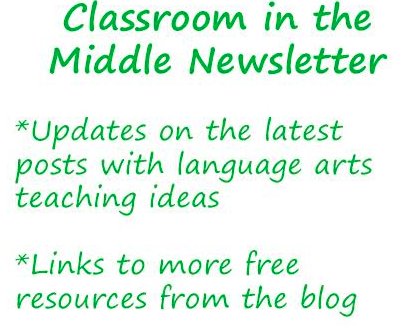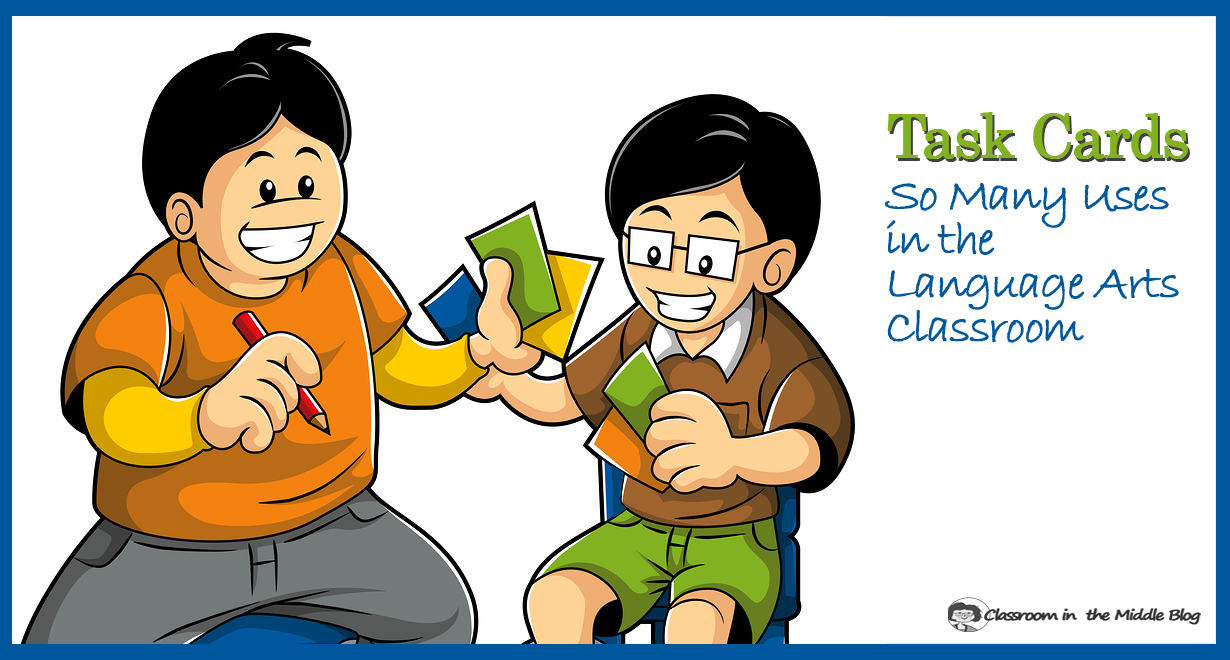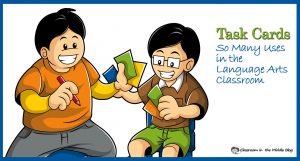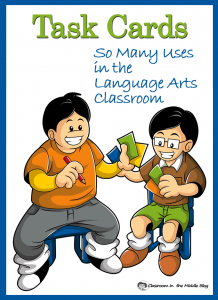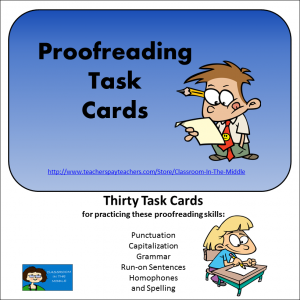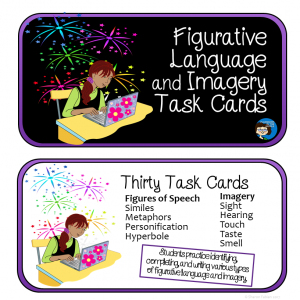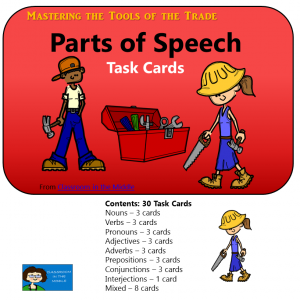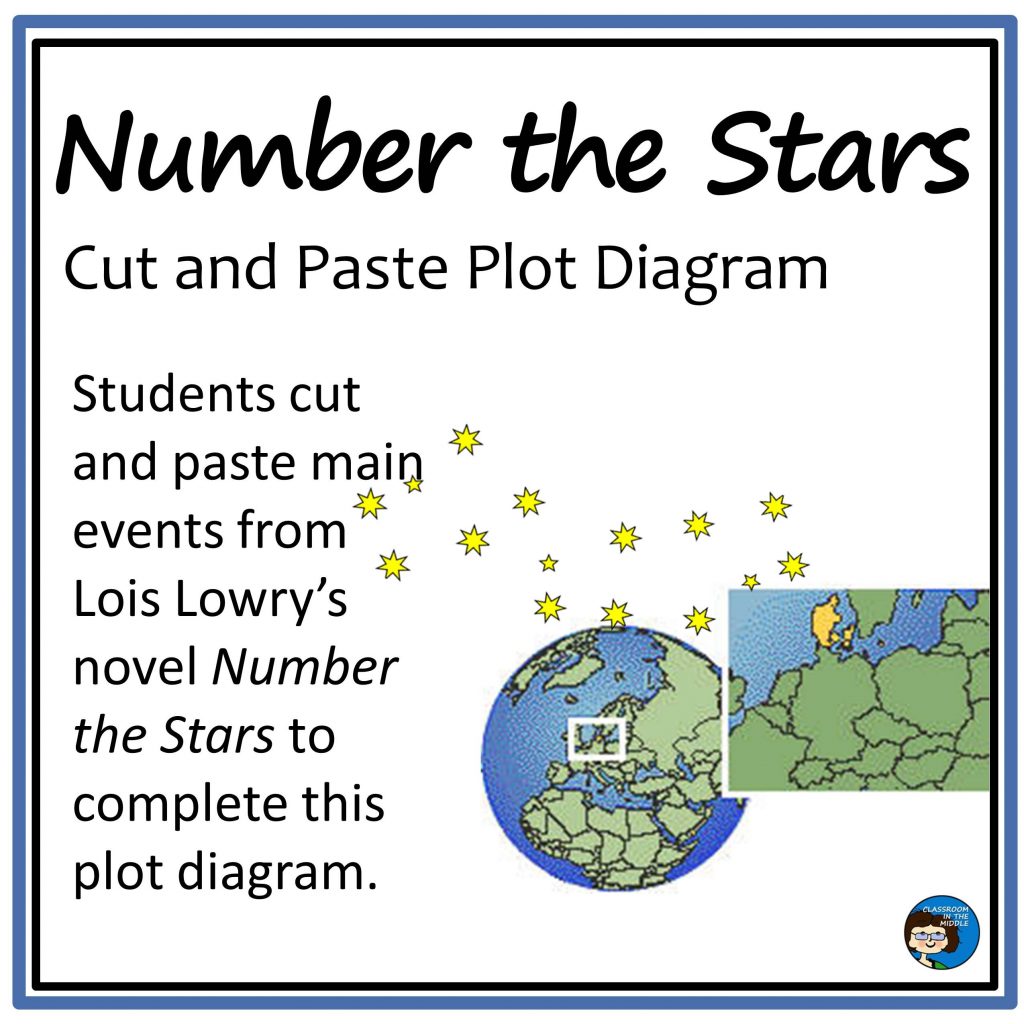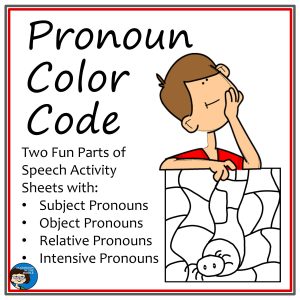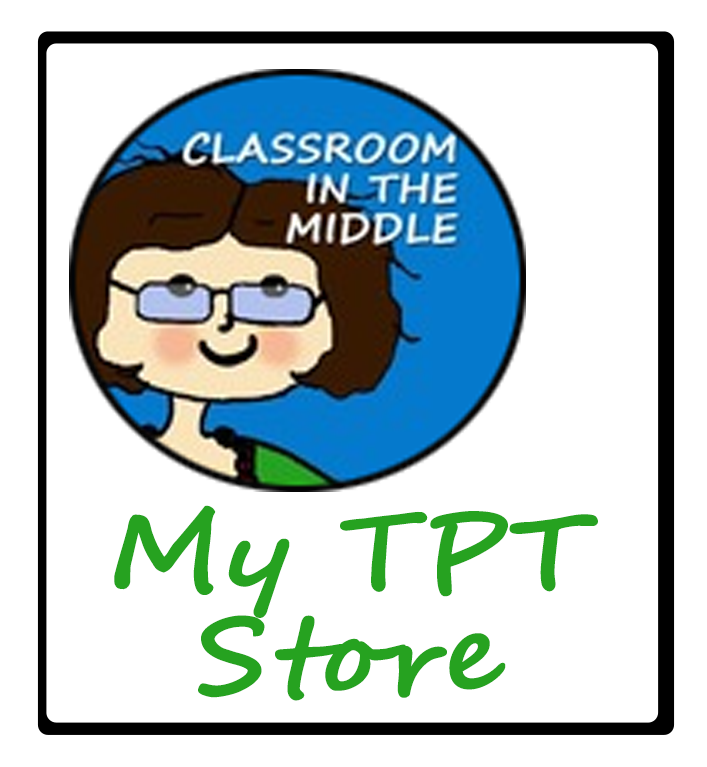Task cards – language arts teachers love them, and so do students. You only have to copy them once and they’re ready to use over and over. And the best part is that there are so many different uses for task cards – from the variety of task card activities to the variety of ways they fit into the curriculum. Middle school, elementary school, and even high school English teachers find these simple, low-tech tools both fun and useful. Check out some of these uses:
Games and Activities with Movement
One of the most fun ways to use task cards is in whole-class games. Whether you choose a competitive game or simply an activity that gets the kids moving around, task card games are a big hit.
- Zap
Zap is a competitive game for two teams of students. An element of chance makes it more exciting. There are a number of ways to play; here’s one.
The materials that you will need are a set of task cards and some sticky notes. On the back of most of the sticky notes, write a point value. On the back of a few, write “Zap!” Put the sticky notes on the board. Divide the class into two teams. The teams take turns drawing a task card and taking a sticky note from the board. If they answer the question on the task card correctly, they get the points. If they get it wrong, they lose that number of points. “Zap!” and they lose all their points. When the cards are all used up, or when the time runs out, the team with the most points wins.
- Scoot
Scoot is a fast-moving whole-class game in which each student competes for himself. The teacher is the timekeeper which keeps this game moving along, and so it’s great for younger kids.
You will need a set of task cards with at least one card per student and a recording sheet for each student’s answers. The recording sheet should be numbered the same as the task cards; if there are thirty cards, number the recording sheet 1 to 30, even if students won’t have time to complete all of the cards. Either make and copy a simple recording sheet in advance, or have each student set up their own recording sheet on lined paper. Place one task card on each student’s desk.
To begin, students answer the question on the card on their desk, recording their answer by the correct number on their sheet. Using a timer, the teacher signals when it it time to “Scoot!” At the signal, every student moved to the next desk and works on the card there. Repeat as time permits. After students’ papers are checked, the one(s) with the most correct answers are the winners (or you could skip the competitive part, and just play for the fun of some quick-paced movement.)
- Footloose
Footloose is somewhat similar to Scoot but more easy-going and random. It too can be played as a competition or simply a fun activity.
You will need a set of task cards and a recording sheet. Place the task cards around the room, on ledges, taped to boards, etc – in easy sight of the students. Each student will need a recording sheet.
Set a time limit for the whole game/activity. Students move around from one card to another at their own pace, completing cards as they go. Each student can do the cards in any order she chooses until time runs out.
- Solve It, Toss It
For this one you will need task cards with open-response or short answer questions, not multiple choice or true/false. The idea is to choose cards that will each take a few minutes to complete. You will also need a stack of scrap paper; half sheets work fine. Give each student one task card and one piece of scrap paper to start. Keep the rest at your own desk or on a nearby table.
At the signal to start, students complete their first card, record their answer on the scrap paper, and bring it up for you to check. If correct, they get to crumble the paper and shoot a basket; then they pick up another card and another piece of scrap paper. If incorrect, give clues as needed and send the student back to keep working on the same card. Student helpers can make the game go smoothly by keeping track of points for the baskets and by helping to check papers if needed.
In Interactive Notebooks
Task cards can be a great resource for helping students to add information and examples to their interactive notebooks. They’re ready-made, concise, attractive, and a good size for gluing into notebooks. See an example here.
For Small Group Activities and Individualization
Task cards aren’t only for games though! They’re great for small group activities including cooperative learning, partner work, and centers. They can also provide great, quick lessons for students who need extra help on a particular skill or for fast finishers. You can read more about it here.
Especially for Language Arts
Task cards are especially useful to language arts teachers in the middle grades because of the way the curriculum spirals, repeats, and overlaps. There is always one skill or another that needs a quick review. There are always kids who need to review one thing and others who are ready to move ahead.
The task cards that I have designed for my store are for practicing these varied language arts skills in reading, writing, and vocabulary. For example, in my store I now have sets of task cards about characterization, setting, making inferences, using context clues, text structures, proverbs and adages, and idioms. I’ve also been working on cards for background writing skills; you can read more about that here.
If you have other fun or creative ways that you’ve used task cards in your classroom, of maybe just a simple way that you’ve used this deceptively simple resource to make life a little easier in the classroom, I would love to hear about those too!
Related Resources

